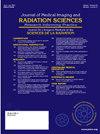Contouring a New Path: Ontario's Collaborative Approach to AI in Radiotherapy
IF 2
Q3 RADIOLOGY, NUCLEAR MEDICINE & MEDICAL IMAGING
Journal of Medical Imaging and Radiation Sciences
Pub Date : 2025-05-01
DOI:10.1016/j.jmir.2025.101921
引用次数: 0
Abstract
Purpose/Aim
The Radiation Therapy Community of Practice (RThCoP) embarked on a collaborative initiative to explore the implementation of artificial intelligence (AI) auto-contouring tools in radiation therapy planning. This initiative aims to understand the benefits and opportunities of auto-contouring solutions, their impact on program efficiency, and maintaining quality and safety while addressing the diverse needs of radiation therapy programs across multiple centres.
Methods/Process
The current state evaluation included representation from all participating regional cancer centres (RCCs) (n=7) using AI contouring tools, ensuring inclusivity and a broad range of perspectives. A series of structured meetings were conducted to gather insights and share experiences regarding AI contouring adoption. Key areas explored included integration into clinical workflows, addressing the learning curve associated with new technology, and measuring efficiency improvements. Feedback from these discussions will be used to develop actionable guidance, supplemented by evidence-based recommendations and consensus-driven best practices.
Results or Benefits/Challenges
Currently, three of seven RCCs utilize proprietary auto-contouring solutions embedded in their primary treatment planning system (TPS). Four of seven RCCs use third-party auto-contouring solutions, two of which plan to migrate to their primary TPS's tools in the near future. Regardless of the tools in use, the initiative highlighted several benefits of adopting AI contouring, including reduced planning time, improved consistency in contouring, and enhanced resource allocation. However, opportunities for improvement include addressing variability in vendor solutions, training approaches to enhance confidence in AI-assisted workflows, and mitigating the perceived impact on the scope of practice for radiation therapists. Collaboration among centres allowed for the sharing of strategies to address these challenges, fostering a sense of community and shared learning.
Conclusions/Impact
The current state evaluation has provided centres with an initial understanding of the benefits and opportunities for improvement when integrating AI contouring into clinical practice. Early AI adopters reported measurable improvements in workflow efficiency and reductions in inter-clinician variability. The initiative also underscored the importance of fostering a culture of continuous learning and adaptability in adopting emerging technologies. The work of the RThCoP aims to establish a foundation for scaling AI contouring practices across the broader radiation therapy community, with the potential to improve patient outcomes and optimize resource utilization on a larger scale. Most importantly, the initiative underscores the need for the RThCoP in fostering collaboration across Ontario, creating a platform for centres to share resources, align on best practices, and collectively address challenges in adopting AI contouring and beyond.
勾画一条新的道路:安大略省在放射治疗中人工智能的合作方法
目的/目的放射治疗实践社区(RThCoP)启动了一项合作计划,探索人工智能(AI)自动轮廓工具在放射治疗计划中的实施。该计划旨在了解自动轮廓解决方案的好处和机会,它们对项目效率的影响,以及在满足多个中心放射治疗项目的不同需求的同时保持质量和安全。当前状态评估包括来自所有参与的区域癌症中心(rcc) (n=7)的代表,使用人工智能轮廓工具,确保包容性和广泛的视角。举办了一系列结构化会议,以收集有关人工智能轮廓采用的见解和分享经验。研究的关键领域包括整合到临床工作流程中,解决与新技术相关的学习曲线,以及衡量效率的提高。这些讨论的反馈将用于制定可操作的指导,并辅以循证建议和共识驱动的最佳做法。结果或益处/挑战目前,七个rcc中有三个在其初级治疗计划系统(TPS)中嵌入了专有的自动轮廓解决方案。七个rcc中有四个使用第三方自动轮廓解决方案,其中两个计划在不久的将来迁移到他们的主要TPS工具。无论使用何种工具,该倡议都强调了采用人工智能轮廓的几个好处,包括减少规划时间,提高轮廓的一致性,并增强资源分配。然而,改进的机会包括解决供应商解决方案的可变性,培训方法以增强对人工智能辅助工作流程的信心,以及减轻对放射治疗师实践范围的感知影响。中心之间的合作有助于分享应对这些挑战的战略,培养社区意识和共享学习。结论/影响目前的状态评估为中心提供了将人工智能轮廓整合到临床实践中的益处和改进机会的初步了解。早期的人工智能采用者报告了工作流程效率的显著提高和临床医生间差异的减少。该倡议还强调了在采用新兴技术方面培养不断学习和适应能力的文化的重要性。RThCoP的工作旨在为在更广泛的放射治疗领域扩展人工智能轮廓实践奠定基础,并有可能在更大范围内改善患者预后并优化资源利用。最重要的是,该倡议强调了RThCoP在促进安大略省合作方面的必要性,为各中心创建一个共享资源、协调最佳实践的平台,并共同应对采用人工智能等高线等方面的挑战。
本文章由计算机程序翻译,如有差异,请以英文原文为准。
求助全文
约1分钟内获得全文
求助全文
来源期刊

Journal of Medical Imaging and Radiation Sciences
RADIOLOGY, NUCLEAR MEDICINE & MEDICAL IMAGING-
CiteScore
2.30
自引率
11.10%
发文量
231
审稿时长
53 days
期刊介绍:
Journal of Medical Imaging and Radiation Sciences is the official peer-reviewed journal of the Canadian Association of Medical Radiation Technologists. This journal is published four times a year and is circulated to approximately 11,000 medical radiation technologists, libraries and radiology departments throughout Canada, the United States and overseas. The Journal publishes articles on recent research, new technology and techniques, professional practices, technologists viewpoints as well as relevant book reviews.
 求助内容:
求助内容: 应助结果提醒方式:
应助结果提醒方式:


